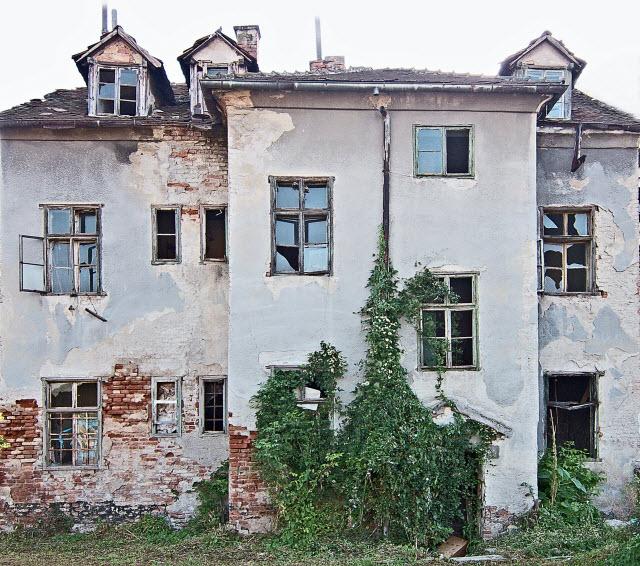I’ve addressed the concept of PIGs in real estate in many articles previously. The concept is somewhat abstract, and seems to be quite misunderstood still, in-spite of me addressing it on multiple occasions.
Just this morning I received an email to this end. The email was from a gentleman considering a vacant 4-plex. He wrote – I know it looks like a vacant PIG, but is there a chance that it’s not a pig…?
Let’s see if we can answer this question…
What Is a PIG in Real Estate Investing?
A PIG piece of Investment Real Estate is not a thing – it is a concept I came up with to describe a loser. Did you know that most real estate loses money?
Why, you ask? Well, there could be many reasons, both financial, physical, or market-driven. Everyone always thinks that a PIG is necessarily a cheap property. Though I might have had something to do with this misconception by writing about $30,000 pigs, a misconception it is… A PIG can be an expensive property as well!
Let me give you a few examples:
Pig Property Example 1:
It could be that you bought a beautiful duplex in a small town. The duplex is well-located, and attracts people with incomes of $40,000. There are, however, two large employers in this town (did I mention, this is a small town), and most people making $40,000 salaries work for these employers.
Well – one sunny, Spring morning, one of these employers announces that they will be relocating out of State…something to do with taxes.
Suddenly, your pool of potential tenants just shrunk by 50%. This means that your physical vacancy just skyrocketed. In order to combat the effects, you are forced to lower rents and offer concessions of all sorts, but you quickly find out that your economic vacancy costs you just as much as physical vacancy did, and likely more!
In the end, what you have is a very nice, expensive, well-located property which used to make a good return, but no more. In order to make money in the new environment, you will have had to pay 35% less for this duplex – who knew? (Ben Leybovich knew!)
This property was always a PIG, though it didn’t become apparent until later. And now, there is a structural problem that cannot be solved – you’re stuck, and will have to sell at a loss!
Pig Property Example 2:
You have some cash sitting around, so you buy a house for $30,000 which you can rent for $600/month. The house appraises for $40,000, so you figure you can’t lose. Obviously, relative to rent this house is within the 2% guideline, meaning that monthly rent is 2% of the purchase price, which you’ve heard guarantees good cash flow. And, to boot, you seem to be buying 25% equity position, since the house appraised for 25% more than what you’re paying. So – full steam ahead…
Within 36 months you have to evict 2 tenants, and each time the house is trashed to a tune of $3,500, not to mention the fact that it takes you 3 months to fix and re-rent this house. So, now you’ve essentially burned through your equity, because now you are into this house to a tune of $40,000.
Then, the following winter, the furnace burns out and needs replaced. Now you have a decision to make:
In an absolute spotless condition this house can be sold for $40,000. It never appreciated in the 3 years that you’ve owned it, since pigs don’t appreciate. You have to pay agent commissions out of this, which means that the most you can possibly clear on the sale is about $37,500.
You are into this house at about $40,000 as it is, and now the house needs a new furnace…
You are smart enough to realize that what has happened to you is not accidental. These dynamics are structural. Who knew? (Ben Leybovich knew.)
You decide to fix the house up and sell at a loss.
There you have it – two examples of completely different-looking pigs. The commonality is some sort of structural obsolescence pursuant to property, or the marketplace. What makes real estate investing tough is that we need to recognize all types of future obsolescence before it happens, which is not easy…
Back to the Email
So, the guy was emailing to ask whether there is any chance that a vacant 4-plex that he saw on the MLS which looks like a PIG, is not a PIG. So, let’s see:
The 4-plex is on the MLS, and yet it is vacant. Why? It could be because the current owner either doesn’t have the money to fix it up, or, which is more likely, because it’ll cost more to do it than the building is worth. That is likely why nobody has bought it yet. A lot of people are willing to put money into a property if this property can be stabilized and value can be created. But if not…
Conclusion
Is this building worth taking a further look at – perhaps, but more than likely my bird’s eye view analysis is correct. This is a PIG – why? Because structurally it cannot make money. The amount of money that would have to be spent on this building could never be supported by either the rents or market valuation. It’s a PIG.


One Comment